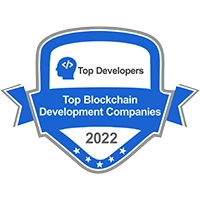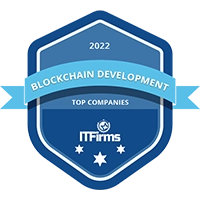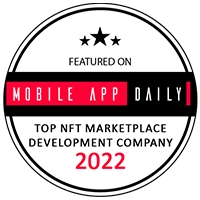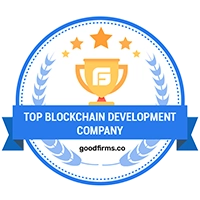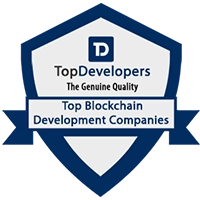Introduction: The Rise of Large Language Models (LLMs) and Their Impact on AI Development
In the world of artificial intelligence, there’s no denying that large language models (LLMs) are game-changers. From transforming how machines understand and generate human language to enabling groundbreaking AI applications, LLMs have unlocked a whole new era of possibilities. Think of them as the "brainpower" behind modern AI solutions, providing the critical thinking and language abilities that make advanced AI systems possible.
But here’s the thing: while LLMs are undeniably powerful, building, managing, and deploying them is no walk in the park. That’s where LLM development frameworks come in. These frameworks simplify the whole process, making it easier for businesses and developers to integrate LLMs into their projects without tearing their hair out over complex technicalities.
How LLMs Are Shaping Modern AI
LLMs, like GPT-4 or OpenAI's ChatGPT, have taken AI's natural language processing capabilities to a level that was unimaginable a few years ago. These models can analyze vast amounts of text, generate human-like responses, summarize information, and even handle tasks like sentiment analysis, text generation, and question-answering. The exciting part? They're not limited to one application. Whether it's chatbots, virtual assistants, content creation tools, or even complex problem-solving applications—LLMs can do it all.
But here's the catch: using these models effectively requires more than just plugging in some code. LLMs need the right infrastructure, tools, and workflows to perform at their best. And that's exactly where LLM development frameworks come into play. They act like a toolkit, providing the necessary infrastructure to develop, deploy, and scale these models for various applications.
Understanding the Core of LLM Development Frameworks
What Exactly Are LLM Development Frameworks?
Alright, let's get into the nitty-gritty. What exactly are LLM development frameworks? In simple terms, they're collections of tools, libraries, and infrastructure that make it easier to work with large language models. These frameworks provide the scaffolding you need to integrate, manage, and deploy LLMs without getting lost in a maze of technical jargon or spending months on development.
Key Components: APIs, Model Integration, Data Handling, and Deployment Tools
At their core, LLM development frameworks are made up of several key components:
- APIs: These allow your application to interact with LLMs easily, pulling in model outputs as needed. APIs make it simple to integrate pre-trained models into your existing systems.
- Model Integration: This is where frameworks shine. They simplify the process of connecting your AI application to the right LLM, whether you're using OpenAI's GPT series or any other model.
- Data Handling: A crucial aspect, especially if your application relies on retrieving or processing vast amounts of data. Good frameworks offer tools for managing data pipelines and preparing the information your LLM needs.
- Deployment Tools: Once your LLM is trained and fine-tuned, frameworks provide the infrastructure to deploy it, often across various platforms, without hiccups.
These components work together to turn complex AI projects into something far more manageable.
How Do LLM Frameworks Work?
Exploring the Workflows that Power AI-Driven Applications
Imagine you're building a new AI application. You've chosen your LLM, maybe OpenAI's GPT-4, and you know what you want the app to do, say, generate detailed reports from customer data. But how do you go from having an idea to a fully functioning app? That's where the workflow comes in, and LLM development frameworks help guide that process.
A typical workflow includes setting up data pipelines, configuring prompts for the model, connecting external tools or APIs, and then fine-tuning how the LLM processes inputs and delivers outputs. LLM frameworks provide a clear structure for managing each of these steps, ensuring everything works together smoothly.
Behind-the-Scenes: LLM Chaining, Data Processing, and Model Tuning
LLM Chaining
LLM chaining connects multiple components, such as APIs, databases, or additional models, to create advanced applications. For instance, a customer service chatbot may use an LLM to understand queries while accessing a data retrieval system to provide contextually relevant answers.
Data Processing
Clean, well-organized data is essential for LLM applications. Frameworks offer tools to preprocess, organize, and store data, ensuring optimal model performance.
Model Tuning
Frameworks simplify model tuning by providing tools to adjust prompts and parameters, allowing developers to fine-tune LLMs for improved accuracy and efficiency.
Unpacking the Leading LLM Frameworks: A Detailed Overview
The All-in-One Solution: LangChain
LangChain has positioned itself as a go-to framework for AI teams that need a comprehensive suite of tools to build, scale, and manage LLM applications. This framework stands out because it doesn't just handle language models—it also integrates other essential components to create robust AI-driven applications.
From prompt engineering to developing more complex AI agents, LangChain offers the flexibility to manage everything in one place. Its ability to streamline the development process by providing a diverse set of tools, like document loaders, memory management for conversational AI, and even specialized chains, makes it an all-in-one solution for many use cases.
What sets LangChain apart is its ability to handle retrieval-augmented generation (RAG) systems, making it perfect for building chatbots that don't just rely on static responses but pull from dynamic data sources. If your team is working on an AI solution that requires handling queries or providing highly contextual responses—whether it's customer support chatbots or advanced knowledge retrieval systems—LangChain is a powerful tool that can speed up development without sacrificing performance.
Why LangChain is Perfect for Chatbots, RAG Systems, and More
LangChain excels in building chatbots and RAG systems due to its extensive support for integrating language models with external data. This means developers can easily set up applications that don't just respond to queries but pull relevant data from various sources, providing accurate, context-based answers. With memory management tools, LangChain also makes it easy to build applications that maintain conversation histories, allowing for more dynamic and context-aware interactions.
LlamaIndex: Best for Data-Centric AI Applications
If your focus is on data retrieval and processing, LlamaIndex is likely the best framework for the job. It specializes in connecting LLMs to a variety of external data sources, which is essential for applications that rely on large or complex datasets. LlamaIndex's strength lies in its ability to streamline how data is indexed and retrieved, which makes it perfect for use cases that require retrieval-augmented generation (RAG).
The framework offers a wide range of tools for document indexing and creating more efficient workflows when handling vast amounts of information. For businesses looking to build AI applications around data-intensive tasks, such as document search, analysis, or large-scale query answering systems, LlamaIndex is an invaluable asset.
How LlamaIndex Excels at Data Retrieval and Processing
At its core, LlamaIndex provides tools that allow you to build semantic search systems and document retrieval applications with ease. The framework's real strength is its ability to index massive datasets and retrieve highly relevant documents in response to user queries. This capability makes LlamaIndex ideal for businesses or developers working on applications where precision in data retrieval is critical—such as research tools, legal document analysis, or large-scale content management systems.
Moreover, LlamaIndex simplifies the process of connecting LLMs to these datasets. It allows developers to create efficient data pipelines, which means faster retrieval times and more accurate results without heavy manual configurations.
Haystack: The Hidden Gem for Semantic Search and Retrieval
While not as widely known as some of its counterparts, Haystack is a powerful framework designed to simplify workflows in semantic search and document processing. Its strength lies in its modularity, offering a variety of pre-built pipelines that allow you to chain together different components with minimal effort.
Haystack is especially useful for developers who need to build applications like text summarization tools, document search systems, or Q&A platforms. Its document processing capabilities make it a valuable option for projects where handling and processing large amounts of text are key.
Simplified Workflows with Powerful Search and Document Processing
One of the standout features of Haystack is its ability to streamline workflows by offering a wide range of pre-built pipelines. For instance, you can create a pipeline that handles both document retrieval and question answering, significantly reducing development time. Haystack also allows you to integrate multiple databases, making it easier to manage and search through large datasets efficiently.
Whether you're working on a Q&A platform that requires fast, accurate responses or a text summarization tool for long-form documents, Haystack's robust capabilities in semantic search and document processing can help boost your project's efficiency.
AutoGen: The Future of Multi-Agent AI Systems
If your project involves more complex, multi-agent AI systems, AutoGen is a framework worth exploring. Designed to handle tasks that involve multiple AI agents working together, AutoGen simplifies the process of managing agent-based systems without overwhelming developers with intricate details. It's particularly valuable for teams experimenting with autonomous AI.
AutoGen's ability to orchestrate agent interactions allows developers to create more advanced workflows, where each agent has a specific role in gathering data, executing code, or interacting with users. For teams that need to push the boundaries of what LLMs can do, AutoGen offers the flexibility to test and deploy multi-agent systems without the usual complexity.
Building Complex Agent Networks Without the Hassle
With AutoGen, developers can build and manage complex multi-agent systems with relative ease. The framework abstracts much of the complexity involved in creating these systems, allowing teams to focus on the logic and interactions between agents, rather than the technicalities of managing the agents themselves.
This makes AutoGen perfect for applications where multiple tasks need to be completed simultaneously or where various agents must work together to achieve a common goal, such as automated data processing, multi-step problem solving, or interactive AI assistants.
Ready to Build Your Own LLM-Powered Application?
Contact UsThe Anatomy of an Effective LLM-Powered Application
Connecting LLMs to External Data Sources for Maximum Impact
One of the most impactful advancements in LLM development is Retrieval-Augmented Generation (RAG). RAG significantly enhances the performance of large language models by combining LLM-generated content with relevant, real-time data retrieval. This process involves retrieving external data, such as documents or database entries, and using that information to augment the model's output.
RAG can improve the accuracy and relevance of AI responses, especially in applications that require real-time data access, such as customer service, research, or business intelligence tools. For example, an LLM-based chatbot connected to a company's internal knowledge base can retrieve the latest product details before answering a customer query, ensuring up-to-date and precise responses.
How Retrieval-Augmented Generation (RAG) Transforms AI Responses
RAG transforms AI-generated responses by making them contextually relevant and accurate. Instead of relying solely on pre-trained model knowledge, the AI can retrieve specific data points that directly address the user's question. This makes the model more powerful in tasks like question answering, document summarization, and complex decision-making. By integrating external data sources, RAG eliminates potential gaps in the model's knowledge, leading to more reliable outcomes.
Integrating Data Retrieval with Models to Enhance Accuracy
The integration of external data sources with LLMs allows the model to ground its responses in factual information, leading to improved accuracy. Frameworks like LangChain and LlamaIndex simplify this integration by offering tools that connect models to databases, APIs, or internal knowledge repositories. By enabling seamless data retrieval, these frameworks allow developers to build applications that provide precise and reliable answers based on real-time data.
Deploying and Scaling LLM Applications Made Easy
Deploying and scaling LLM-powered applications has become significantly easier with modern LLM frameworks. These frameworks offer plug-and-play tools that simplify the integration of language models across various platforms, such as cloud environments, local servers, and edge devices. By automating infrastructure configuration tasks—like API setups and server management—frameworks like LangChain and Haystack allow developers to focus on optimizing model performance rather than dealing with complex technical setups. This streamlined approach ensures fast and seamless deployment into production environments.
When it comes to scaling, handling large datasets and high-volume requests can be challenging due to the resource-intensive nature of LLMs. Frameworks like LlamaIndex and AutoGen provide built-in tools that efficiently manage these challenges by parallelizing model processing and minimizing performance bottlenecks. This helps developers scale applications to meet increasing demand without adding significant overhead, ensuring smooth operations and cost-effective infrastructure management for large-scale LLM applications.
Harnessing Multi-Model Capabilities for Advanced Performance
As AI applications become more advanced, utilizing multiple LLMs within a single framework is increasingly beneficial. This approach enhances performance by allowing developers to leverage different models for specific tasks. For example, one model may specialize in natural language understanding, while another is optimized for data retrieval.
Frameworks like LangChain and Griptape support multi-model configurations, enabling developers to use several LLMs within a single application. This is especially useful for tasks requiring high accuracy or specialized outputs, such as language generation combined with fact-checking or sentiment analysis.
Managing multiple models is simplified through frameworks like LangChain, which offers model chaining. This feature allows outputs from one model to be passed to another, enhancing overall performance. By adopting this modular approach, developers can fine-tune each model's role in the workflow, ensuring efficiency and delivering superior results across complex AI tasks.
Best Practices for Leveraging LLM Development Frameworks
- Set Clear Goals and Use Cases: Start by defining your specific objectives and use cases. Select a framework that aligns with your needs—LangChain for conversational AI or LlamaIndex for data-centric tasks. This ensures you choose the right tool for the job.
- Begin with Small-Scale Experiments: Before diving into complex projects, run small-scale tests. Experiment with prompt engineering and data ingestion to see how the framework handles different tasks. Gradually add complexity as your project progresses.
- Leverage Debugging Tools: Use debugging and monitoring tools, such as LangSmith, to track your model's performance. These insights allow you to make data-driven adjustments and improve accuracy over time.
- Optimize Data Pipelines: Ensure your data pipelines are efficient and scalable, especially for large datasets. Properly structured pipelines can significantly speed up deployment and improve performance.
- Refine Prompt Engineering and Model Tuning: Continuously adjust parameters like input length and temperature to fine-tune model responses. Regular tuning leads to better, more accurate outputs based on real-world needs.
Looking to Streamline Your AI Development with the Right Framework?
Get in TouchReal-World Applications: LLM Frameworks in Action
Building Conversational AI: Chatbots that Truly Understand
LLM frameworks like LangChain are revolutionizing conversational AI by enabling chatbots to go beyond pre-programmed responses. With LangChain, chatbots become more dynamic, capable of understanding context and retaining conversational memory. This allows chatbots to engage in more meaningful, long-term conversations, enhancing the overall user experience. By integrating language models with external tools, such as APIs or knowledge bases, LangChain-powered chatbots can retrieve real-time data.
For instance, a customer asking about product availability can receive a live response from the inventory system. These capabilities make LangChain ideal for businesses looking to improve customer service through AI-driven, interactive conversations. Many companies are already using these chatbots to manage customer inquiries, such as returns, troubleshooting, and delivery tracking, allowing human agents to handle more complex issues, leading to faster resolution times and better customer satisfaction.
Enhancing Knowledge Retrieval with LLM-Based Assistants
Beyond chatbots, frameworks like LlamaIndex and Haystack are helping businesses build intelligent knowledge retrieval systems. These tools are particularly useful in data-heavy environments like legal and research fields, where accessing vast repositories of unstructured data is critical. LlamaIndex's data connectors allow users to quickly pull and index information from multiple sources, while Haystack's semantic search and document retrieval capabilities make it a powerful tool for scanning and processing large volumes of text. These frameworks enable businesses to develop question-answering systems that deliver precise answers to specific queries by cross-referencing indexed data, streamlining knowledge management.
Transforming Document Analysis and Semantic Search
For document analysis and semantic search, Haystack provides a robust solution. Its modular design allows developers to create pipelines for automating document ingestion, summarization, and query handling. Businesses can deploy Haystack to break down large amounts of text, making it easier to extract key points from lengthy documents. In industries like legal services or finance, where document analysis is essential, Haystack's pipelines offer fast, accurate summarization. Additionally, Haystack's semantic search capabilities improve the accuracy of search results by understanding the context of queries, transforming how businesses manage internal data.
Key Considerations Before Adopting LLM Development Frameworks
- Evaluate Compatibility: Before adopting an LLM framework, ensure it is compatible with your current tech stack, including APIs, databases, and cloud platforms. This minimizes friction during integration.
- Use Integration Tools: Many frameworks like LangChain and LlamaIndex offer built-in integration tools to connect models with external data sources and applications, supporting both SQL and NoSQL databases for seamless data access.
- Map the Integration Process: Plan how the framework will interact with your existing infrastructure. Determine if it requires extensive customization or offers out-of-the-box compatibility, which can save time and resources.
- Check Documentation: Select a framework with well-documented APIs and integration guides that fit your infrastructure. Clear documentation helps streamline the integration process.
- Test in a Sandbox Environment: Before full-scale deployment, test the integration in a sandbox environment to ensure all components work smoothly and prevent unexpected issues in production.
Cost and Performance: Getting the Most Out of Your Investment
When choosing an LLM development framework, balancing cost and performance is crucial. Frameworks like LangChain and Haystack offer tiered pricing, allowing scalability while keeping operational costs in check. While some frameworks may seem expensive initially, their ability to streamline operations and reduce development time offers long-term savings. To ensure high performance without overspending, focus on optimizing model deployment with features like load balancing and memory management to achieve efficient and cost-effective scalability.
Conclusion
LLM development frameworks are transforming how businesses build and deploy AI applications. From improving chatbot interactions with LLM chaining to optimizing data retrieval and enhancing model performance through tuning, these frameworks make advanced AI accessible and efficient. Whether you're developing a conversational AI tool or building a robust knowledge retrieval system, selecting the right framework can streamline your workflow, reduce costs, and maximize performance.
By understanding the strengths of frameworks like LangChain, LlamaIndex, and Haystack, you can tailor your AI solutions to meet your specific needs. The future of AI is here—are you ready to harness its full potential?


